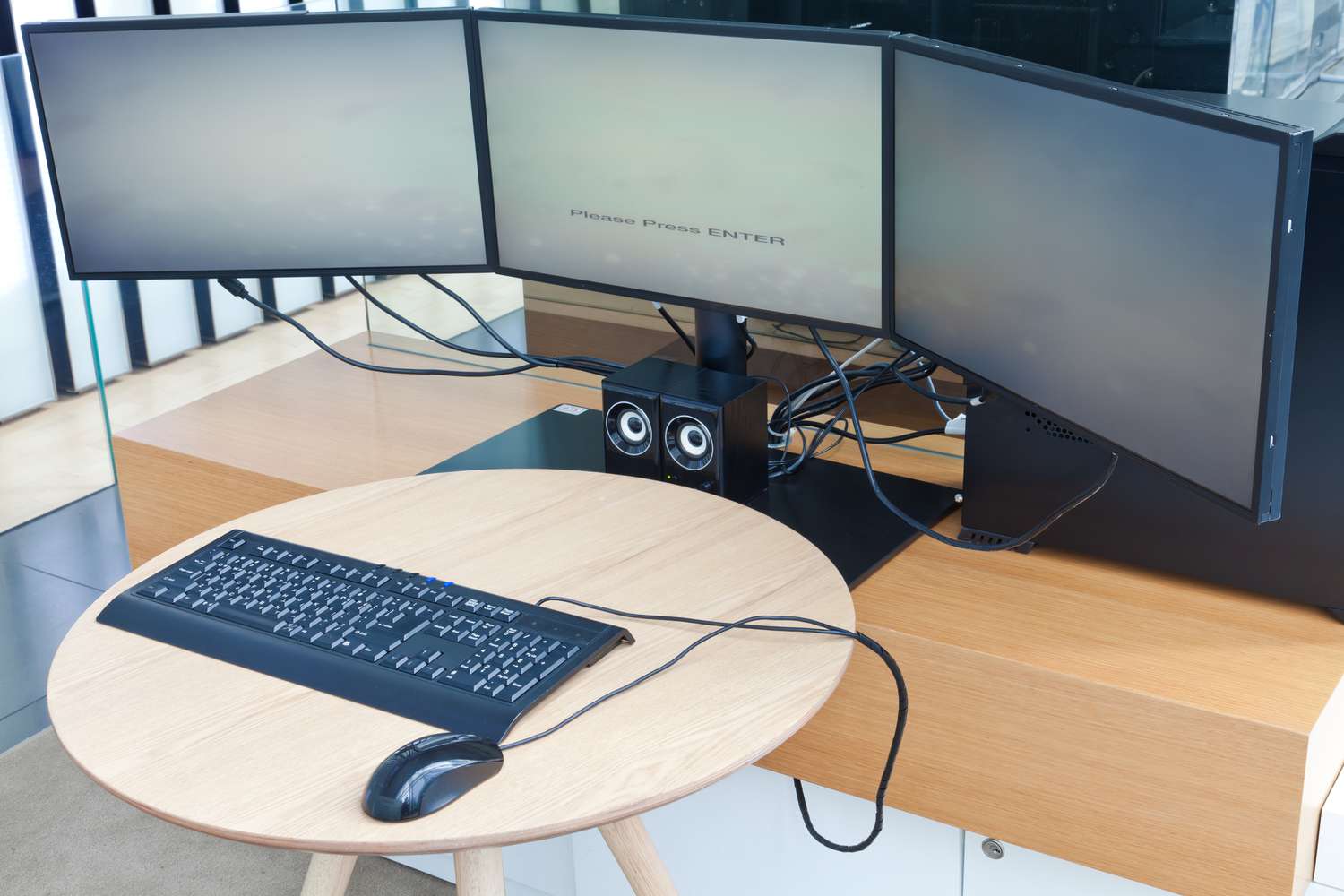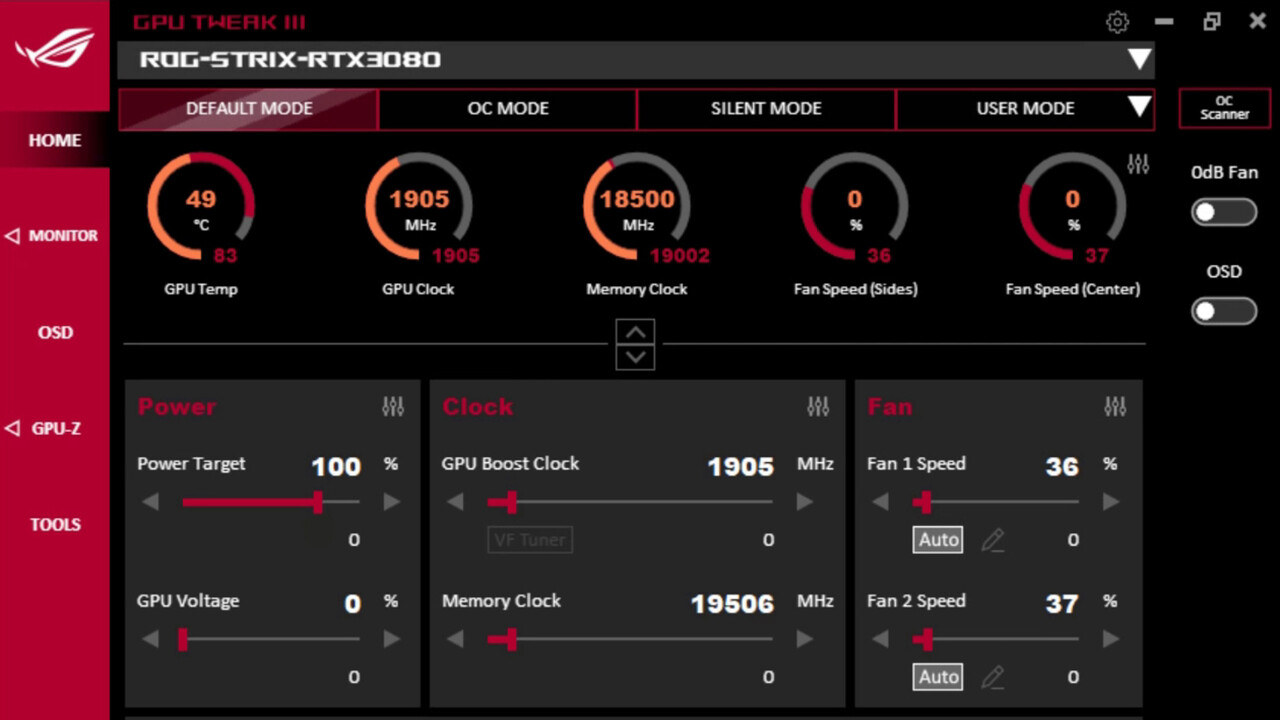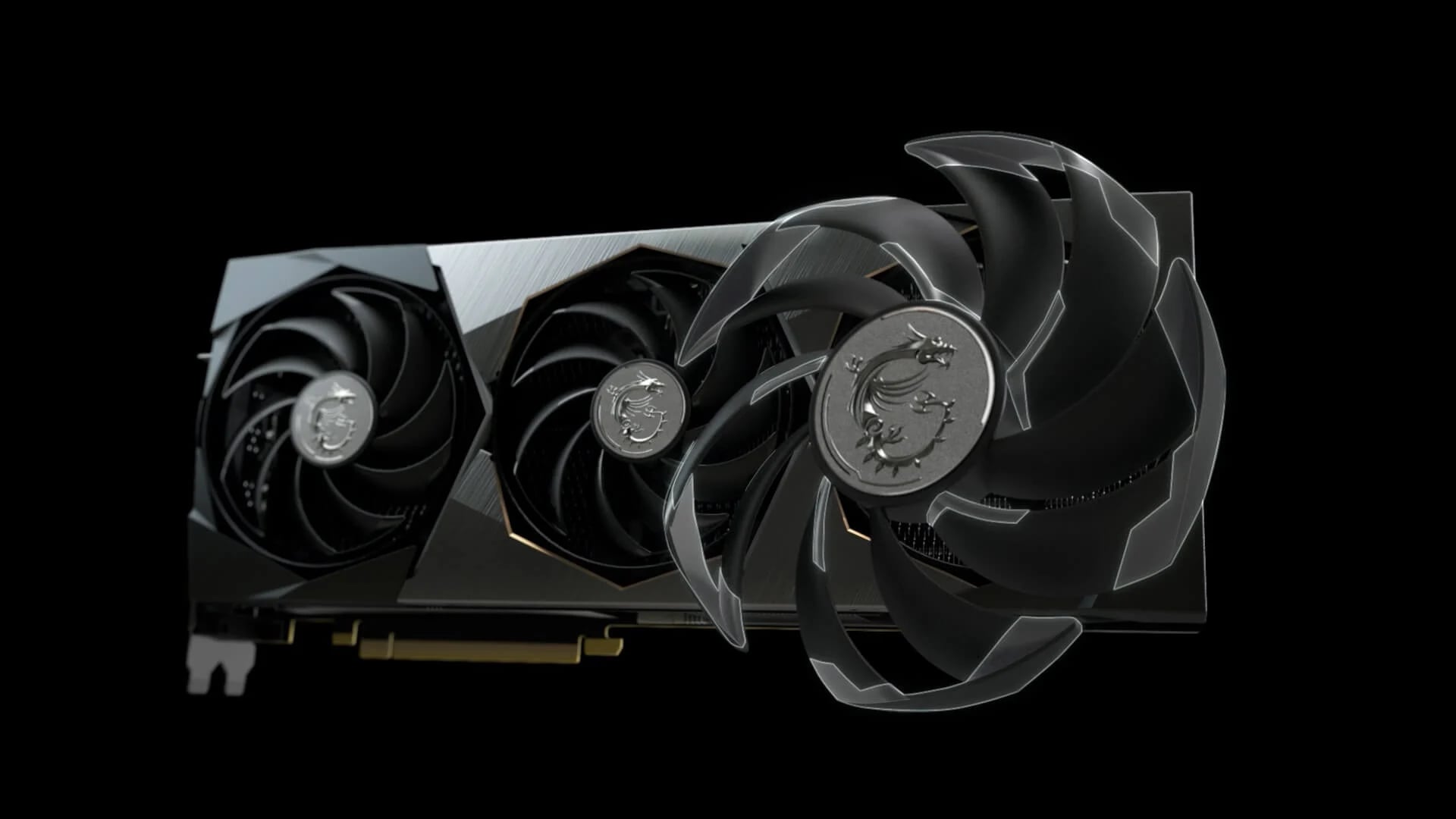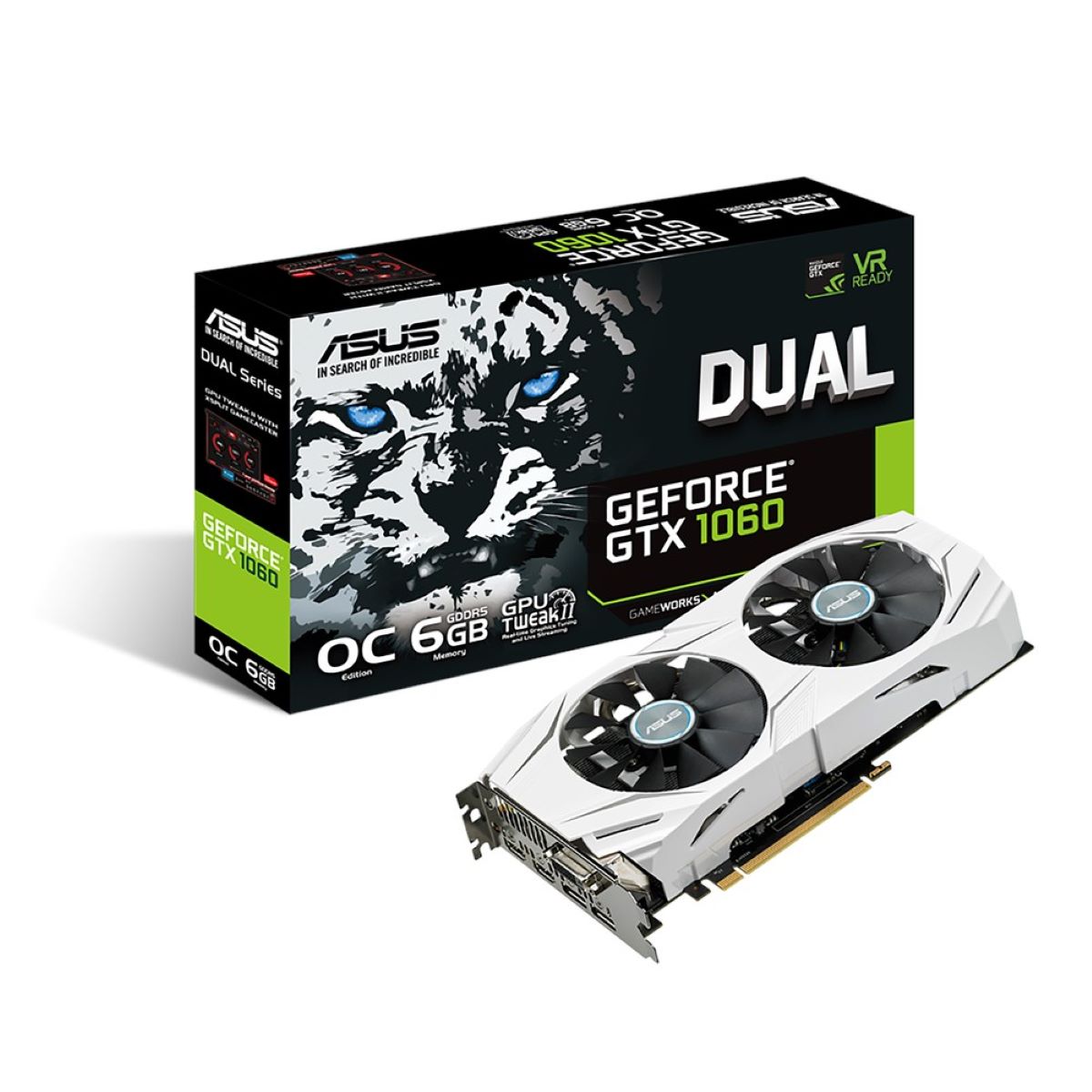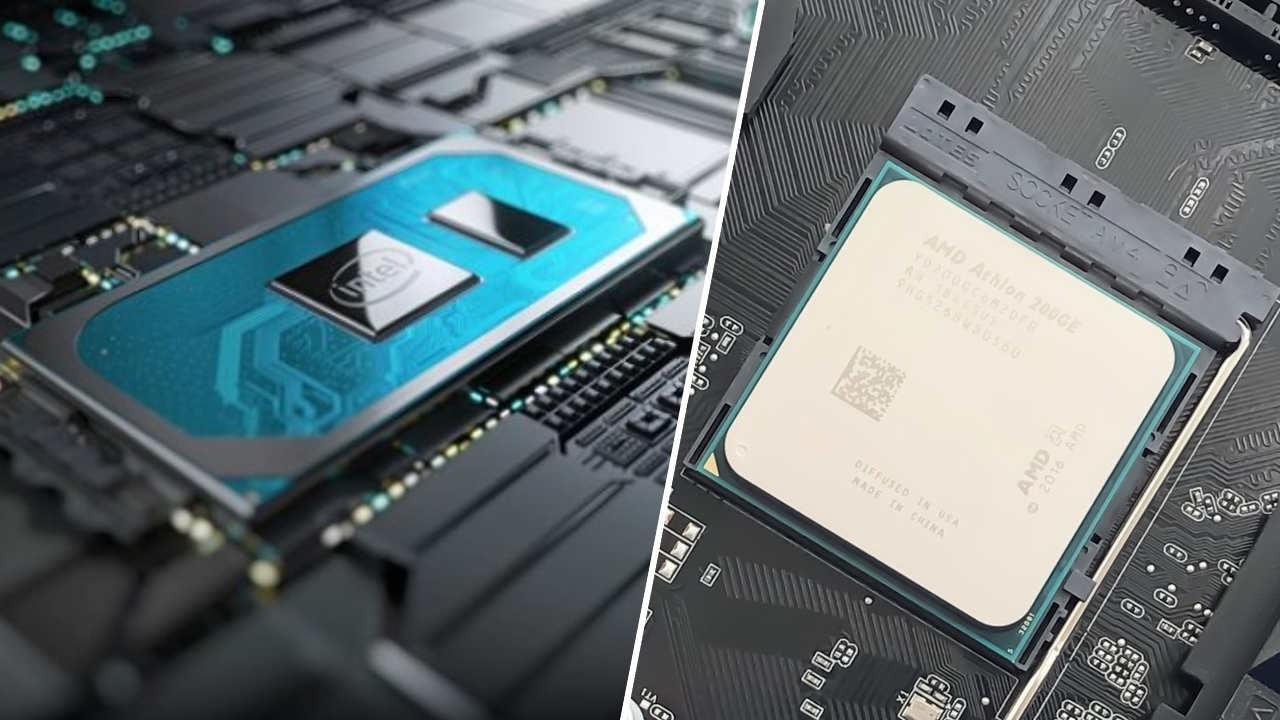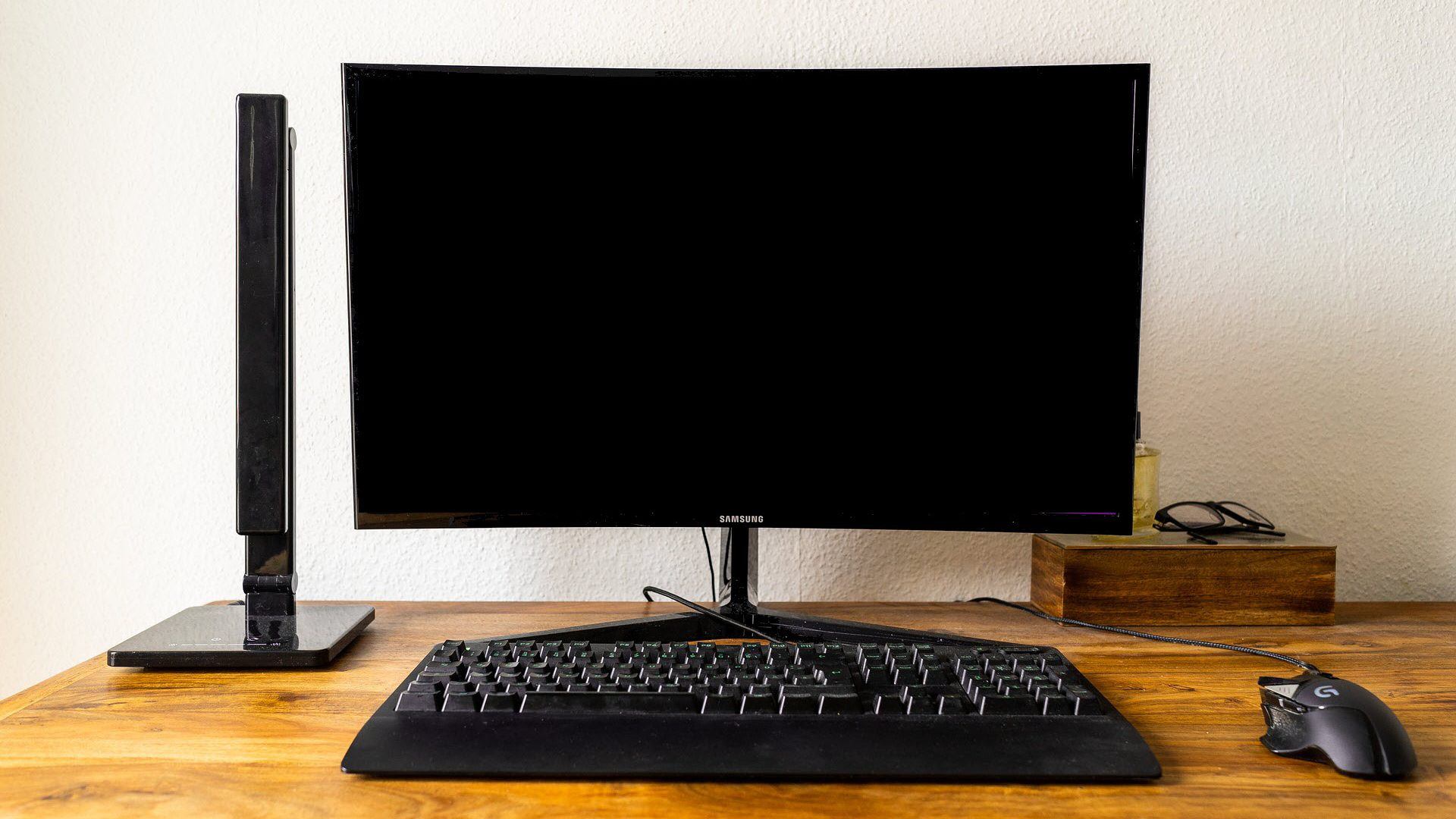Introduction
Welcome to the wonderful world of multitasking and productivity! If you’re someone who frequently juggles multiple tasks or simply desires a larger workspace, running three monitors on a single graphics card can be a game-changer. With an extended desktop setup, you can effortlessly switch between applications, enhance your gaming experience, or boost your productivity by having more screen real estate.
However, before you dive into the world of triple monitors, it’s crucial to ensure that your graphics card is compatible and up to the task. In this guide, we’ll walk you through the steps necessary to successfully configure three monitors on one graphics card, so you can enjoy the benefits of a seamless multitasking experience.
Whether you’re a gamer, a creative professional, or simply want to enhance your workflow, running three monitors can provide the flexibility and efficiency you need.
Let’s get started by checking the compatibility of your graphics card with multiple monitors.
Check Graphics Card Compatibility
Before you begin setting up three monitors, it’s essential to ensure that your graphics card supports this configuration. While most modern graphics cards can handle multiple monitors, it’s still recommended to verify compatibility to avoid any potential issues.
Here’s how to check the compatibility of your graphics card:
- Refer to the graphics card documentation: Start by checking the documentation or specifications of your graphics card. Look for details regarding the number of monitors it supports simultaneously. Most graphics cards commonly support dual monitors, but not all of them can handle three monitors simultaneously.
- Check the video outputs: Identify the video outputs available on your graphics card. The most common types of video outputs include HDMI, DisplayPort, and DVI. Ensure that you have at least three available video outputs that match the connectors on your monitors. If your graphics card lacks the necessary video outputs, you might need to consider upgrading to a more suitable graphics card.
- Research online: If you’re still unsure about your graphics card’s compatibility, search online forums or manufacturer websites for more information. You can find useful resources that specifically discuss your graphics card model and its support for running three monitors.
Checking the compatibility of your graphics card is an important first step. Ensuring compatibility will save you time and frustration during the setup process, allowing you to smoothly move on to the next steps.
Update Graphics Card Drivers
Once you’ve confirmed the compatibility of your graphics card, the next step is to ensure that you have the latest drivers installed. Graphics card drivers are essential software that enable your operating system to communicate effectively with the graphics card, ensuring optimal performance and compatibility with multiple monitors.
To update your graphics card drivers, follow these steps:
- Identify your graphics card model: Determine the exact model of your graphics card. You can find this information in the Device Manager on Windows or System Information on macOS. Alternatively, refer to the graphics card documentation or manufacturer’s website.
- Download the latest drivers: Visit the manufacturer’s website for your graphics card and navigate to the “Support” or “Downloads” section. Locate the latest drivers for your specific graphics card model and download them. Ensure that you download the correct drivers for your operating system.
- Install the drivers: Once the drivers have been downloaded, run the installer and follow the on-screen instructions to install them. It’s recommended to choose the “Custom” installation option if available, as this allows you to perform a clean installation, removing any remnants of previous drivers.
- Restart your computer: After the installation is complete, it’s important to restart your computer to apply the changes and ensure that the new drivers are properly integrated with your system.
By updating your graphics card drivers, you not only ensure optimal performance but also maximize compatibility with running three monitors. Outdated drivers can sometimes cause compatibility issues or limit the functionality of your graphics card when it comes to multi-monitor setups. Keeping your drivers up to date is a crucial step in the process.
Connect Monitors to Graphics Card
Now that your graphics card is compatible and drivers are up to date, it’s time to physically connect your monitors to the graphics card. Depending on the types of ports available on your graphics card and monitors, you may need to use various cables or adapters to establish the connections.
Follow these steps to connect your monitors:
- Identify available video outputs: Check the types of video outputs on your graphics card, typically HDMI, DisplayPort, or DVI. Ensure that you have enough video outputs to connect all three monitors. If needed, use adapters to convert the video output to match the connectors on your monitors.
- Connect the first monitor: Take one of your monitors and connect it to one of the available video outputs on the graphics card. Plug in the corresponding cable and securely tighten the connectors. If using HDMI or DisplayPort cables, be mindful of their orientation and gently push until they lock into place.
- Repeat for the remaining monitors: Repeat the process for the second and third monitors, connecting them to the remaining available video outputs on your graphics card. Ensure that all connections are secure and that each monitor is receiving power.
- Power on the monitors: Turn on each of the connected monitors and make sure they are successfully displaying images. If any monitor remains blank, double-check the cable connections and ensure that the input source on the monitor is set correctly.
Once you have successfully connected all three monitors to your graphics card, you are one step closer to enjoying the benefits of an extended desktop setup.
Configure Display Settings
After connecting your monitors to the graphics card, it’s time to configure the display settings to ensure that your three monitors are recognized and functioning correctly. This step involves adjusting the display mode, screen resolution, and monitor orientation to create an extended desktop.
Follow these steps to configure your display settings:
- Open the display settings: On Windows, right-click on the desktop and select “Display settings” from the context menu. On macOS, go to “System Preferences” and click on “Displays.”
- Identify the monitors: The display settings will show a representation of each connected monitor. Identify the monitors based on their positions and orientation.
- Choose the display mode: Select the desired display mode from the available options. The most common modes include “Extended Display” or “Duplicate Display.” To create an extended desktop, choose the “Extended Display” option.
- Adjust the screen resolution: Configure the screen resolution for each monitor individually to ensure the best display quality. Higher resolutions provide a sharper image, but remember that your graphics card must support the chosen resolution for all three monitors.
- Set the monitor orientation: If necessary, adjust the orientation of each monitor to match their physical placement. You can choose between landscape (horizontal) or portrait (vertical) mode, depending on your preference.
- Arrange the monitors: Drag and rearrange the monitor representations in the display settings window to match the actual physical layout of your monitors. This step ensures that moving the cursor from one screen to another feels natural.
By properly configuring the display settings, you’ll be able to seamlessly navigate your extended desktop setup and take full advantage of the additional screen real estate.
Adjust Resolution and Orientation
Once you have connected your monitors and configured the display settings, you may need to fine-tune the resolution and orientation of each monitor individually. This step ensures that your content is displayed accurately and optimally across all screens.
Here’s how you can adjust the resolution and orientation:
- Access the display settings: Open the display settings as mentioned in the previous section.
- Choose a resolution: Select the resolution tab for each monitor and choose the desired resolution from the available options. Higher resolutions offer more screen real estate, but keep in mind that your graphics card must support the chosen resolution for all three monitors.
- Modify the orientation: If you prefer a different orientation for a specific monitor, such as portrait mode for reading or coding, you can change it in the display settings. Choose the orientation that best suits your needs: landscape (horizontal) or portrait (vertical).
- Apply the changes: Once you have adjusted the resolution and orientation for each monitor, apply the changes and allow the system to adjust accordingly.
- Check clarity and alignment: After applying the changes, assess the clarity and alignment of the content on each monitor. If necessary, make further adjustments to ensure that the visuals are sharp and properly aligned.
By adjusting the resolution and orientation, you can fine-tune the display settings to your preferred setup. This step ensures that your content is displayed in the most visually pleasing and efficient manner across all three monitors.
Troubleshooting Tips
While setting up three monitors on a single graphics card can be a seamless process, occasional glitches or issues may arise. Here are some troubleshooting tips to help you overcome common challenges:
- Check cable connections: Double-check that all cable connections between the graphics card and monitors are secure. Loose connections can lead to display issues or signal interruptions.
- Update graphics card drivers: If you encounter display problems or compatibility issues, ensure that you have the latest graphics card drivers installed. Visit the manufacturer’s website and download the most recent drivers for your specific graphics card model.
- Restart the computer: Sometimes, a simple restart can resolve minor software conflicts or refresh the graphics card settings. Restart your computer and check if the issues persist.
- Adjust monitor settings: Explore the settings on each monitor to ensure that the brightness, contrast, and other display settings are configured optimally. Incorrect monitor settings can affect the overall visual experience.
- Try different cables or adapters: If you are experiencing connectivity issues, try using different cables or adapters to rule out any cable or adapter-related problems. Sometimes, faulty or incompatible cables can cause display problems.
- Test one monitor at a time: If you encounter issues with the display on multiple monitors, try disconnecting two of them and test each monitor individually. This will help identify if the problem is specific to a particular monitor or the overall configuration.
- Check graphics card temperature: Overheating can cause display issues or system instability. Ensure that the cooling system on your graphics card is functioning properly and that there is adequate airflow around the card.
- Consult manufacturer support: If you have exhausted all troubleshooting methods and are still experiencing difficulties, reach out to the manufacturer’s support team for further assistance. They can provide specific guidance or additional troubleshooting steps for your graphics card or monitor model.
By following these troubleshooting tips, you can resolve common issues and ensure a smooth and uninterrupted triple monitor experience.
Conclusion
Congratulations! You have successfully learned how to set up and run three monitors on a single graphics card. By following the steps outlined in this guide, you can now enjoy the benefits of an extended desktop setup, whether it’s for gaming, multitasking, or enhancing your productivity.
Remember, before diving into the setup process, ensure that your graphics card is compatible with running three monitors simultaneously. Updating your graphics card drivers is also crucial to ensure optimal performance and compatibility.
Once you have connected your monitors to the graphics card, take the time to configure the display settings to create an extended desktop. Adjust the resolution and orientation to your liking, making sure to align everything accurately.
If you encounter any challenges along the way, refer to the troubleshooting tips section to resolve common issues. Checking cable connections, updating drivers, and testing one monitor at a time can help troubleshoot and address any problems you may face.
Now, with your triple monitor setup ready to go, maximize your productivity, immerse yourself in games, or indulge in a seamless multi-tasking experience like never before. Enjoy the expanded workspace and let your creativity and efficiency soar!







